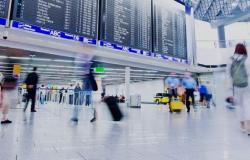The inquiry into the Grenfell Tower disaster, Britain’s worst residential fire since World War II, is due to deliver its highly anticipated findings on Wednesday.
Seventy-two people died in the fire, which broke out on June 14, 2017, and took less than half an hour to spread throughout the 24-storey tower block, which is mostly home to low-income families, in west London.
The cause? A highly combustible facade cladding.
Led by retired judge Martin Moore-Bick, the latest phase of the inquiry aims to understand how a fire, initially small in scale, was able to spread so quickly.
Entire families were trapped in the flames. Among them was that of Abdulaziz El-Wahabi, 52, who died with his wife Faouzia, 41, and their three children, the youngest of whom, Mehdi, was eight years old.
The youngest victims were a stillborn child and a six-month-old baby, Leena Belkadi, found with her mother in a stairwell between the 19th and 20th floors.
Residents who called emergency services were told to stay in their apartments and wait for help. The advice, which was widely criticised, has since been revised.
– “Non-compliant” coating –
The first phase of the investigation, published in October 2019, concluded that the façade cladding was the “main cause” of the spread of the fire.
The second, which began in January 2022, focused on technical issues such as the effectiveness of safety testing for construction materials.
In total, they gave rise to more than 300 hearings and the examination of more than 1,600 testimonies.
The disaster left many people living in buildings covered with similar cladding fearing further tragedy.
Some survivors remain haunted by the tragedy, like Emma Louise O’Connor, who told AFP that she still freezes with fear when she hears a fire engine siren.
The then UK Conservative government announced in 2022 that developers would be required to contribute more to the cost of removing such cladding.
But the issue is far from being resolved.
In late August in Dagenham, east London, more than 80 people had to be evacuated in the middle of the night after being woken by smoke and flames in a building where work to remove “non-compliant” cladding had been partly completed.
According to London Fire Commissioner Andy Roe, there are still around 1,300 buildings in the city where urgent “remedial” work needs to be carried out.
– Criminal prosecution? –
One of the victims’ groups, Grenfell United, has called for assurances that the inquiry’s recommendations will be implemented.
She said that if recommendations made following an inquiry into a 2009 fire at a London apartment building had been implemented, the outcome of the Grenfell fire “could have been very different”.
It calls for the creation of a new independent body to collate the findings of all public inquiries.
Bereaved parents and survivors, for their part, said they hoped the investigation would bring them the “truth we deserve.”
For some, it means prison time for those who “made decisions that put profit above people’s safety.”
London police have warned that they will not be able to deliver their report before the end of 2025.
Prosecutors will then need a year to decide whether to bring criminal charges. Former tower resident Edward Daffarn said such a long delay was unacceptable.
“We are not prepared to wait any longer and this report must be the catalyst for a significant step forward by the Metropolitan Police in bringing to justice those responsible for the deaths of 72 people,” he told the inquiry.
har/phz/adm/bd/mm/lpa






